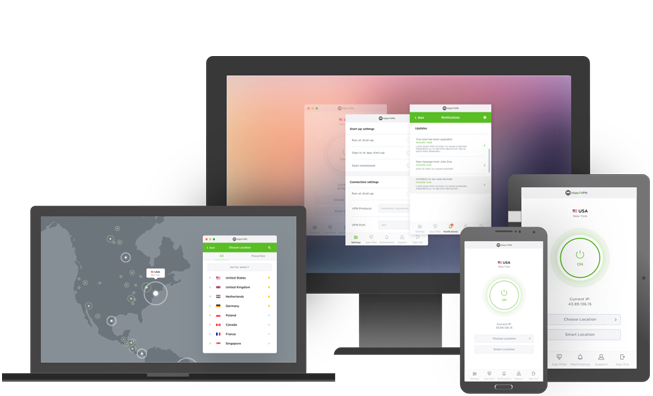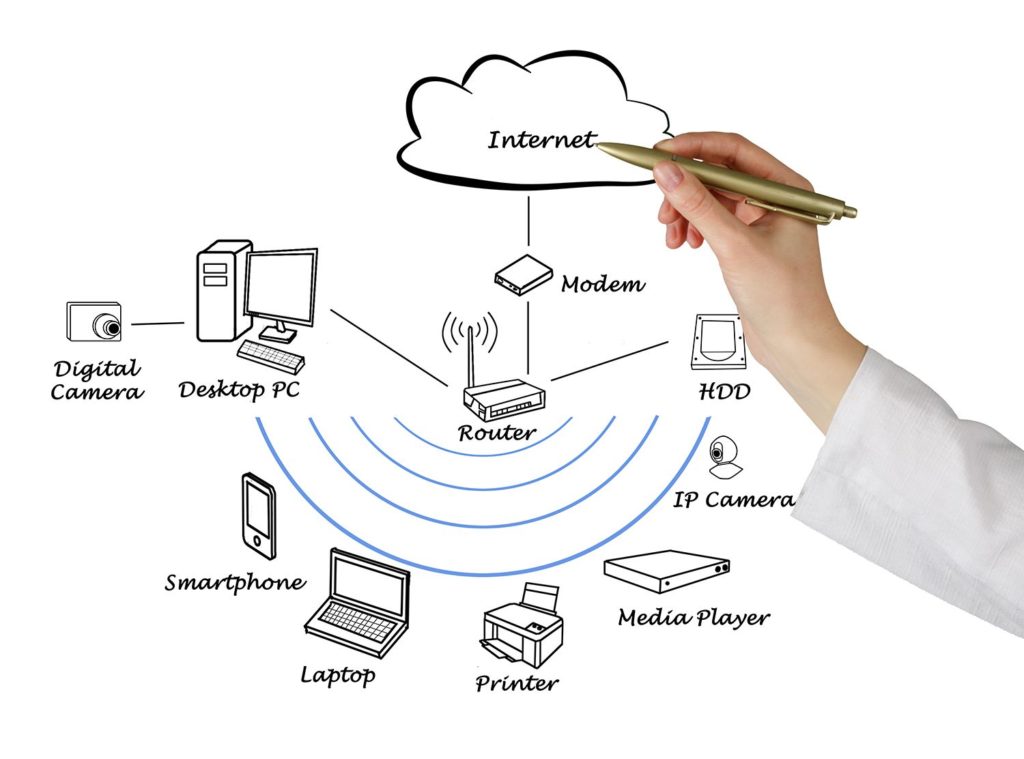
Welcome to the digital age, where connectivity is king and a reliable home network is essential for smooth sailing in our tech-driven lives. Whether you’re streaming your favorite shows, gaming with friends online, or simply browsing the web, having a fast and secure home network can make all the difference.
But fear not! In this comprehensive guide, we’ll walk you through everything you need to know about setting up your very own home network. From planning and equipment selection to troubleshooting common issues, we’ve got you covered.
So grab your coffee (or tea) and get ready to become the master of your own digital domain!
Types of Home Networks
 When it comes to setting up a home network, you have several options to choose from. The type of home network you select will depend on your specific needs and the size of your household.
When it comes to setting up a home network, you have several options to choose from. The type of home network you select will depend on your specific needs and the size of your household.
Wired network
One common type of home network is the Ethernet or wired network. This involves connecting devices using Ethernet cables, which provide fast and reliable connections. Wired networks are ideal for homes with multiple users who require high-speed internet access for activities such as online gaming or streaming media.
Wi-Fi network
Another option is a wireless or Wi-Fi network, which allows devices to connect to the internet without the need for physical cables. Wireless networks offer convenience and flexibility since you can connect devices from anywhere within range. However, they may not provide the same level of speed and reliability as wired networks.
Powerline networking
Powerline networking is another alternative that uses existing electrical wiring in your home to transmit data signals. This can be useful if your Wi-Fi signal doesn’t reach certain areas or if you prefer a more stable connection than wireless can offer.
Mesh networking
Mesh networking is gaining popularity due to its ability to create seamless and robust Wi-Fi coverage throughout large homes by using multiple routers working together as one system.
The best type of home network for you will depend on factors such as budget, desired performance, and ease of setup. Take some time to research each option before making a decision that suits your needs best.
Advantages or Disadvantage of Setting up a Home Network

Having a home network offers numerous benefits that can greatly enhance your digital lifestyle. Here are some advantages to consider when setting up your own home network.
1. Convenience: With a home network, you can easily share files and resources between devices within your household. Whether it’s streaming movies from one device to another or accessing important documents from any computer in the house, having a centralized network makes everything more convenient.
2. Cost savings: Instead of purchasing multiple internet plans for each device, a home network allows you to share a single internet connection among all devices connected to the network. This helps save money on monthly bills and eliminates the need for separate data plans.
3. Increased productivity: A well-designed home network enables efficient collaboration and seamless communication among family members or roommates. You can set up shared calendars, file-sharing systems, and even printers that everyone on the network can access.
4. Entertainment options: With a home network, you can stream music, movies, and TV shows directly to your smart TVs or other streaming devices throughout your house. This opens up endless entertainment possibilities as you can enjoy content from various sources without any limitations.
5. Enhanced security: By setting up a secure password-protected Wi-Fi connection for your home network, you reduce the risk of unauthorized users accessing sensitive information on your devices or using up valuable bandwidth.
6. Future-proofing: As technology evolves rapidly, having an established home network ensures that you are ready for new advancements such as smart homes and Internet of Things (IoT) devices that require connectivity within your household.
Planning Your Home Network Setup
Setting up a home network requires careful planning to ensure that you have the right equipment and setup for your specific needs. Here are some key considerations to keep in mind when planning your home network setup.
First, assess the size of your space and determine how many devices will be connected to the network. This will help you decide on the appropriate router and networking equipment needed to support your devices.
Next, think about where you want to place your router for optimal coverage throughout your home. Consider factors such as distance from other electronics or obstructions like walls that could weaken the signal.
Another important aspect is choosing between wired or wireless connections. While wired connections generally offer faster speeds and more reliable connections, wireless networks provide flexibility and convenience.
Additionally, consider whether you need additional networking components such as switches or extenders to expand coverage in larger homes or areas with weak signals.
Take into account any security measures you want to implement on your home network. This can include setting up strong passwords, enabling firewalls, and regularly updating firmware for enhanced protection against cyber threats.
By carefully planning your home network setup, you can create a secure and efficient system that meets all of your connectivity needs.
Necessary Equipment and Tools
When it comes to setting up a home network, having the right equipment and tools is essential. Here are some of the key items you’ll need to get started.
1. Modem: This device connects your home network to the internet. Make sure you choose a modem that is compatible with your internet service provider.
2. Router: The router acts as the central hub for your network, allowing multiple devices to connect wirelessly or through Ethernet cables. Look for a router with strong signal strength and advanced security features.
3. Ethernet Cables: These cables are used to connect devices directly to the router for faster and more reliable connections. Get cables of different lengths depending on where you plan to place your devices.
4. Wireless Network Adapter: If any of your devices don’t have built-in Wi-Fi capabilities, you’ll need a wireless network adapter to connect them wirelessly.
5. Network Switches or Hubs: If you have multiple wired devices in different rooms, consider using switches or hubs to expand the number of available Ethernet ports.
6. Powerline Adapters: In situations where running Ethernet cables isn’t feasible, powerline adapters can use existing electrical wiring in your house to extend network connectivity between rooms.
7. Network Security Software: To protect your home network from potential threats, invest in reliable antivirus software and firewall protection.
8. Use a VPN: A virtual private network (VPN) creates a secure connection over the
internet, allowing you to access your home network remotely and protect
your data from prying eyes.
9. Network Management Tools: Software tools like network mapping and monitoring software can help you keep track of your network devices and diagnose any issues that may arise.
10. Basic Tools: Finally, make sure you have some basic tools on hand for setting up your network, such as a screwdriver, pliers, and cable cutters.
By ensuring that you have all necessary equipment and tools before setting up your home network, you can streamline the process and ensure smooth operation once everything is connected correctly.
Best VPN for Home Network
HideIPVPN offers a VPN service with military-grade encryption, and high-speed servers with unlimited bandwidth.
Our service comes with shared IP addresses so that your activity can never be tied to one particular user, further protecting your privacy.

We also offer DNS leak protection, a Kill Switch, the latest VPN protocols, and a guaranteed no-log policy.
Best VPN Deal! Get HideIPVPN for $2.7/mo!
Every purchase you make comes with a 30-day money-back guarantee.
Step-by-Step Guide to Setting Up a Home Network
 Setting up a home network may seem like a daunting task, but with the right guidance, it can be a breeze. Follow these step-by-step instructions to get your home network up and running smoothly.
Setting up a home network may seem like a daunting task, but with the right guidance, it can be a breeze. Follow these step-by-step instructions to get your home network up and running smoothly.
First, determine where you want to place your router. Ideally, it should be located in a central area of your home for optimal coverage. Once you’ve chosen the spot, connect one end of an Ethernet cable to the modem and the other end to the WAN port on your router.
Next, power on both devices and wait for them to boot up. You’ll then need to access the router’s configuration page through a web browser. Simply enter the default IP address provided by your router’s manufacturer into the browser’s address bar.
Once you’re logged into the configuration page, you can customize various settings such as network name (SSID) and password. It’s recommended to choose a strong password that combines letters, numbers, and special characters for enhanced security.
After configuring your wireless settings, connect devices such as computers or smartphones via Wi-Fi or Ethernet cables if needed. Make sure all connected devices are within range of your Wi-Fi signal for optimal performance.
To ensure seamless connectivity throughout your home, consider using Wi-Fi extenders or mesh networks if necessary. These devices amplify signals and eliminate dead spots in larger homes or areas with obstructions.
Don’t forget about securing your network against potential threats. Enable encryption protocols such as WPA2-PSK (Wi-Fi Protected Access 2 – Pre-Shared Key) and regularly update firmware on all network devices for added protection against vulnerabilities.
By following these simple steps, you’ll have a functioning home network in no time! Enjoy fast internet speeds and reliable connectivity throughout every corner of your abode.
Troubleshooting Common Home Network Issues
Are you facing issues with your home network? Don’t worry, it happens to the best of us. Sometimes, even the most well-planned and set up networks can encounter problems. The good news is that most common home network issues can be easily resolved with a little troubleshooting.
Slow Internet Speed
One common issue you might face is slow internet speed. If your internet connection seems sluggish, try restarting your modem and router. This simple step can often fix the problem by clearing any temporary glitches or errors.
Intermittent Connectivity
Another frustrating problem is intermittent connectivity. If your devices keep losing their connection to the network, check for any physical obstructions or interference from nearby electronic devices that may be causing signal disruption. Additionally, ensure that all cables are securely plugged in and not damaged.
Sometimes, certain websites or online services might not load properly on specific devices within your home network. In such cases, clear the browser cache or try accessing them using a different browser to rule out any software-related issues.
If you’re experiencing frequent dropouts or disconnections from the network altogether, updating your router’s firmware could help resolve this issue. Manufacturers often release firmware updates to address bugs and improve stability.
Security Concerns
Security concerns are also crucial when troubleshooting home networks. If you suspect unauthorized access to your network or experience suspicious activities like random device connections, change your Wi-Fi password immediately and enable encryption protocols like WPA2-PSK for enhanced security.
Remember that each home network setup is unique, so these troubleshooting steps may vary depending on factors like hardware configuration and ISP settings. However, with patience and some basic technical knowledge about networking concepts, most common issues can be successfully troubleshooted without expert assistance.
Tips for Maintaining and Securing Your Home Network
![]() Now that you have set up your home network, it is important to ensure its long-term functionality and security. Here are some essential tips for maintaining and securing your home network:
Now that you have set up your home network, it is important to ensure its long-term functionality and security. Here are some essential tips for maintaining and securing your home network:
Regularly update your devices: Manufacturers often release software updates that address vulnerabilities in their devices. Make sure to regularly check for updates on all the devices connected to your network and install them promptly.
Secure your Wi-Fi network: Change the default username and password of your Wi-Fi router to something unique and strong. Also, enable WPA2 encryption for added security. Regularly change the Wi-Fi password as an additional precaution.
Enable firewalls: Most routers come with built-in firewalls that protect against unauthorized access. Enable these firewalls to add an extra layer of defense to your network.
Use strong passwords: Ensure that all devices connected to your home network have strong, unique passwords. Avoid using common or easily guessable passwords such as “password” or “123456”.
Disable remote management features: Remote management features allow you to access your router’s settings from outside of your home network. However, they can also be exploited by hackers. It is advisable to disable this feature unless absolutely necessary.
Regularly backup data: Backing up important files ensures that even if there is a security breach or technical issue, you will still have a copy of critical data. Consider using cloud storage or external hard drives for regular backups.
Conclusion
Setting up a home network may seem like a daunting task at first, but with proper planning and the right equipment, it can be easily accomplished. By following this comprehensive guide, you now have all the information you need to create a robust and secure home network.
Remember to consider your specific needs when choosing the type of network that works best for you. Whether you opt for a wired or wireless setup, each has its own set of advantages and disadvantages. Take into account factors such as speed, security, and ease of use before making your decision.
Once you have gathered all the necessary equipment and tools, carefully follow the step-by-step guide provided in this article. This will ensure that your home network is properly configured and functioning optimally.
So why wait? Start building your own reliable home network today!



